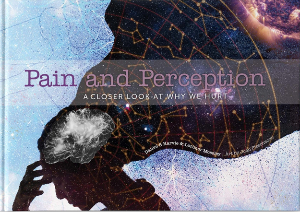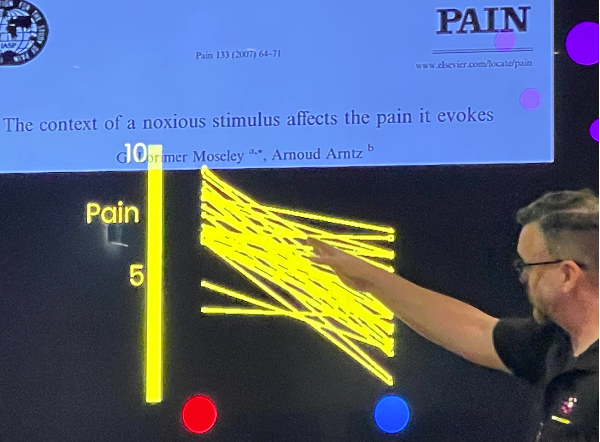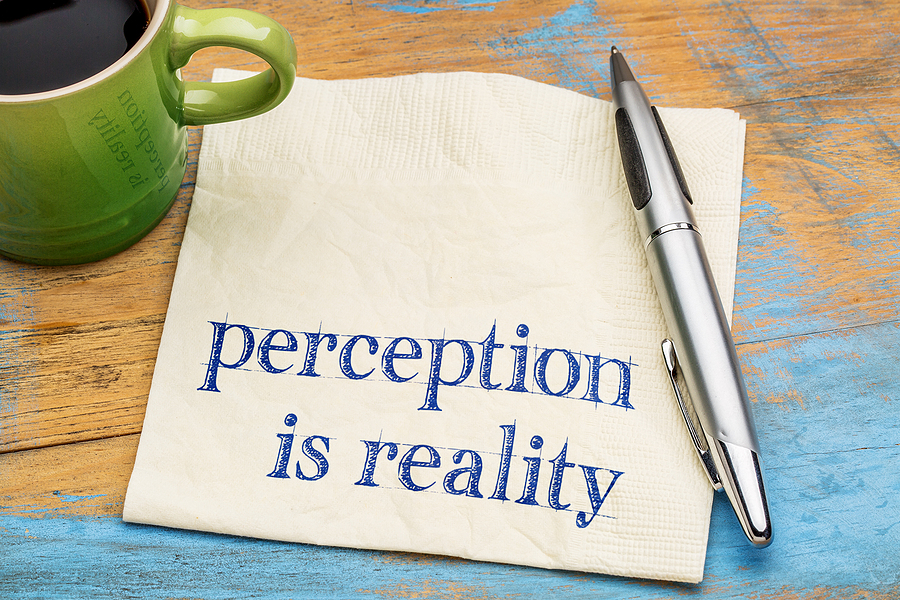 What you see affects your pain. And your senses–what you see, hear, feel, taste, and touch–contribute to your perceptions, including your perception of pain. The book, Pain and Perception, explains perception as an answer to the question: “What does it all mean?” Basically, it’s how the brain makes sense of your experience.
But sensory data is not enough to create a perception; it is only half of the equation. The other half is stored information. This includes conscious and unconscious information along with ideas that sometimes seem unrelated to the situation. Here’s the equation:
Sensory Data + Stored Information = Perception
The equation becomes complicated by the stored information variable, which includes our past experiences as well as all the other knowledge that we hold. Since everyone has a unique database of stored information that combines with the sensory data, everyone also could have a different perception of the same event. Thus, the diversity in stored information explains why two people witness the same situation, piece of art, music concert, food entree, or noxious stimulus, but have different perceptions of it. Let’s clarify this concept with an experiment where raw sensory data–a colored light–combines with study participants’ previously stored information to influence their perception of pain.
What you see affects your pain. And your senses–what you see, hear, feel, taste, and touch–contribute to your perceptions, including your perception of pain. The book, Pain and Perception, explains perception as an answer to the question: “What does it all mean?” Basically, it’s how the brain makes sense of your experience.
But sensory data is not enough to create a perception; it is only half of the equation. The other half is stored information. This includes conscious and unconscious information along with ideas that sometimes seem unrelated to the situation. Here’s the equation:
Sensory Data + Stored Information = Perception
The equation becomes complicated by the stored information variable, which includes our past experiences as well as all the other knowledge that we hold. Since everyone has a unique database of stored information that combines with the sensory data, everyone also could have a different perception of the same event. Thus, the diversity in stored information explains why two people witness the same situation, piece of art, music concert, food entree, or noxious stimulus, but have different perceptions of it. Let’s clarify this concept with an experiment where raw sensory data–a colored light–combines with study participants’ previously stored information to influence their perception of pain.
Red Light Blue Light and Your Perception of Pain
In this research study, participants were touched on the back of the hand with a freezing cold probe of -20°C / -4°F for 500 ms. Although this is not long enough to cause damage, it is long enough to cause pain. Either at the same time or just before the probe was placed on the skin, a red or blue light was illuminated while the participant was looking at or away from the probe. For the purposes of this discussion, I’ll focus on the color of the light and the impact it had on pain perceptions. Participants were told that the red light stood for hot and the blue light for cold, which is consistent with the stored information most people have for these colors. Now, think about this: what other associations do you have with red and blue? You may link red with stop signs or danger and blue with the sky or feeling calm, for example. These associations are important because the brain considers everything (all the stored data) when it creates perceptions. The following image, which was presented during the Rural Outreach Tour, shows the main result of the study. When study participants were shown the red light with the cold probe, they said the touch was more painful: it was more unpleasant, more intense, and hotter, as shown on the left side of the graph above the red circle. Conversely, pain ratings were lower when the blue light was displayed. So, the light’s color provided context (based on the participants’ brains’ stored information), and their brains used that context to create a perception about how painful the “noxious stimulus,” the cold probe, was on their hand. Clearly, context is important in our perceptions and can impact what we see. To further illustrate, watch the following illusion from the book Pain and Perception.
When study participants were shown the red light with the cold probe, they said the touch was more painful: it was more unpleasant, more intense, and hotter, as shown on the left side of the graph above the red circle. Conversely, pain ratings were lower when the blue light was displayed. So, the light’s color provided context (based on the participants’ brains’ stored information), and their brains used that context to create a perception about how painful the “noxious stimulus,” the cold probe, was on their hand. Clearly, context is important in our perceptions and can impact what we see. To further illustrate, watch the following illusion from the book Pain and Perception.



